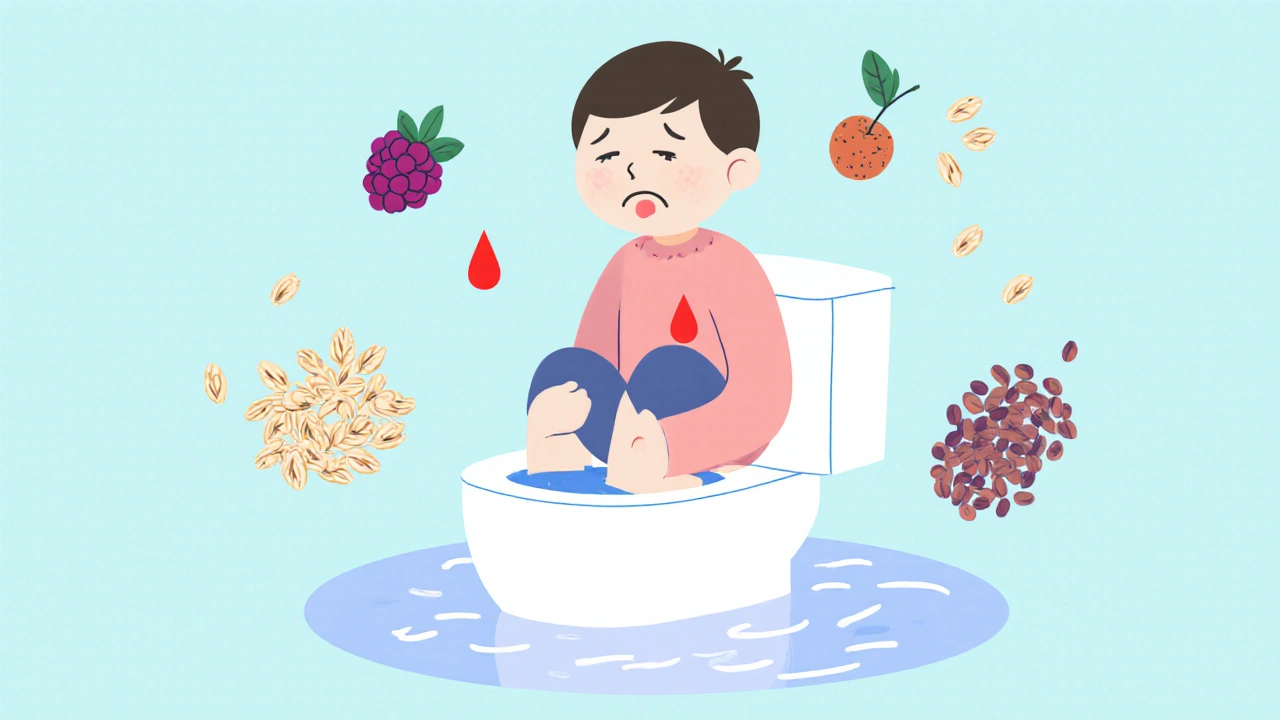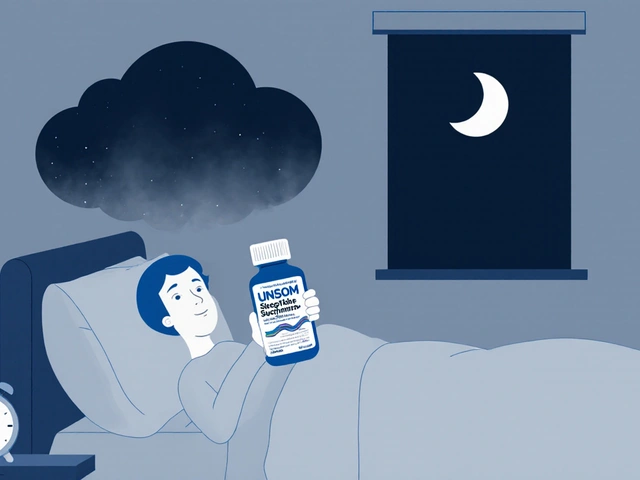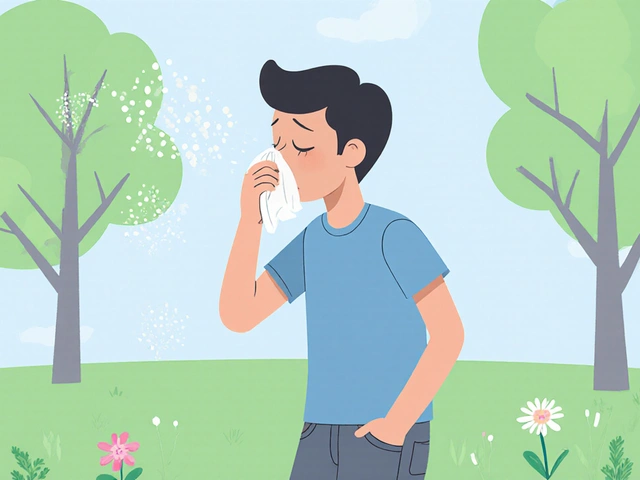Imagine the sharp, burning pain that hits right after you finish a bowel movement - like a knife slicing through your backside. It lasts for minutes, sometimes over an hour. You start avoiding the toilet. You change your diet, skip coffee, even hold it in. But the pain keeps coming back. If this sounds familiar, you might have an anal fissure.
What Exactly Is an Anal Fissure?
An anal fissure is a small tear in the moist tissue lining your anus. It’s not a cut you can see from the outside, but it’s real, and it’s painfully common. Around 80% to 90% of these tears heal on their own within six to eight weeks, especially if they’re recent. But if the pain sticks around longer than two months, it’s likely become chronic - and that’s when things get trickier. Most fissures happen in the back wall of the anus (the posterior midline), which is why they’re so painful. When you pass a hard stool, that tissue stretches too far and splits. What makes it worse is the body’s reaction: the internal anal sphincter muscle spasms, squeezing shut like a clenched fist. That spasm cuts off blood flow to the tear, slowing healing and keeping the pain going in a loop.Why Do Fissures Happen?
The biggest cause? Constipation and straining. Passing large, dry, hard stools is the main trigger. But it’s not just that. Diarrhea can also cause fissures - frequent, watery bowel movements irritate the lining. Childbirth is another common cause, especially in women. Infants get them too, often from passing firm stools during early feeding transitions. Less common causes include inflammatory bowel disease (like Crohn’s), anal cancer, or infections. That’s why if you’re over 50, have unexplained weight loss, or the fissure isn’t healing after a few weeks, you need to rule out other conditions. About 10% of people diagnosed with a fissure actually have something else going on.What Does It Feel Like?
The pain is the biggest clue. It’s not dull or achy - it’s sudden, sharp, and feels like tearing or cutting. Most people say it hits right after a bowel movement and lasts 30 to 90 minutes. Some feel it radiate into the lower back, thighs, or even the genitals. You might also notice bright red blood on the toilet paper or in the bowl. It’s usually a small amount - just a streak or a spot. If you’re seeing dark, tarry stools or large amounts of blood, that’s not a fissure. That’s something else. People often avoid the bathroom because of the pain. Some skip meals to reduce bowel movements. Others stop going to social events, afraid they’ll need to use the toilet. One study found that 65% of patients changed their daily routines because of the discomfort.How Do You Heal a Fissure Without Surgery?
The good news? Most fissures heal without any surgery. The key is breaking the pain-spasm cycle. Here’s what actually works:- Up your fiber. Aim for 25 to 30 grams a day. That’s about 2 cups of cooked lentils, or a big bowl of oatmeal with berries and chia seeds. Most people eat only 15 grams. Increasing fiber softens stools so they pass without tearing. But don’t go over 40 grams - too much can cause bloating and make things worse.
- Drink water. At least 2.5 to 3 liters a day. Fiber pulls water into your stool. If you’re not drinking enough, fiber won’t help. Plain water is best. Avoid too much coffee or alcohol - they dehydrate you.
- Sitz baths. Sit in warm water (not hot) for 10 to 15 minutes, right after each bowel movement. This relaxes the sphincter muscle and increases blood flow to the area. Many people feel relief within a few days.
- Topical ointments. Two options work better than others: diltiazem (2%) and nifedipine (0.3%). They relax the sphincter muscle. Healing rates are 65% to 75%. Nitroglycerin (Rectiv) works too, but it causes headaches in up to a third of users. Apply a pea-sized amount (about 1.25 inches on your finger) inside the anus twice a day. Don’t just smear it on the outside.
- Lidocaine gel. Use this 10 minutes before a bowel movement to numb the area. It doesn’t heal the tear, but it makes passing stool bearable.
What About Botox or Surgery?
If conservative methods don’t work after 6 to 8 weeks, you might need stronger help. Botox injections into the sphincter muscle can relax it for 3 to 4 months. About 60% of people heal after one shot. But in 40% of cases, the fissure comes back within a year. It’s not a permanent fix, but it’s less invasive than surgery. Surgery - specifically a lateral internal sphincterotomy - is the most effective treatment for chronic fissures. It involves cutting a tiny part of the sphincter muscle to stop the spasm. Success rates are 92% to 98%. Most people go back to work in 3 to 4 days. But there’s a catch: 14% of people end up with minor incontinence - maybe a little gas or occasional spotting. It’s rare to lose control of stool, but it’s a real risk.What Doesn’t Work?
A lot of home remedies are popular - witch hazel, coconut oil, tea tree oil, even CBD creams. There’s no solid evidence they heal fissures. Some might soothe the skin, but they don’t fix the muscle spasm or improve blood flow. And don’t rely on laxatives. They make you poop faster, but they don’t soften the stool long-term. Fiber and water do. Also, don’t wait too long to see a doctor. One Reddit thread with 147 patient stories found that most people waited 11 days before getting the right diagnosis. Many were told it was hemorrhoids or “just irritation.”
Who’s Most at Risk?
Fissures hit two main groups: babies and adults aged 20 to 40. In babies, it’s often tied to formula feeding or starting solid foods. In adults, it’s linked to diet, lifestyle, and bowel habits. After age 50, women are three times more likely to get fissures than men - mostly because of childbirth. Pregnancy and delivery put major pressure on the anal area. Obesity and low-fiber diets are rising trends. Experts warn that as more people eat processed foods and sit more, fissure rates could go up by 15% to 20% over the next decade.When to See a Doctor
You don’t need to panic if you have a fissure. But call a doctor if:- The pain lasts more than 8 weeks
- You’re bleeding heavily or frequently
- You notice a lump near the anus
- You have other symptoms like weight loss, fever, or diarrhea
- Home treatments aren’t helping after 2 weeks
Long-Term Prevention
Healing a fissure is one thing. Keeping it from coming back is another. The best defense is consistent habits:- Keep fiber high - every day, not just when you’re in pain
- Drink water with every meal
- Don’t delay bowel movements. Holding it in makes stools harder
- Exercise regularly. Walking helps your digestion
- Avoid straining. If you’re pushing for more than a minute, stop. Try again later
Can anal fissures turn into cancer?
No, anal fissures themselves do not turn into cancer. But some symptoms of fissures - like bleeding, pain, or a lump - can also be signs of anal cancer or Crohn’s disease. That’s why if a fissure doesn’t heal after 8 weeks, or if you’re over 50 with new symptoms, your doctor will check for other conditions. Don’t assume it’s just a fissure if things aren’t improving.
How long does it take for a fissure to heal with diltiazem?
Most people see pain relief within 72 hours of using diltiazem ointment. Complete healing usually takes about 6 weeks. Studies show 65% to 75% of chronic fissures heal with this treatment. It’s important to use it consistently - twice a day for at least 8 weeks - even if the pain goes away sooner.
Is it safe to use lidocaine ointment every day?
Lidocaine is safe for short-term use, like 10 to 15 minutes before bowel movements. But don’t apply it multiple times a day or for more than a few weeks without checking with a doctor. Long-term use can irritate the skin or mask symptoms that need attention. It’s a pain reliever, not a healer.
Can I exercise with an anal fissure?
Yes, gentle exercise like walking, swimming, or yoga is helpful. It improves circulation and prevents constipation. Avoid heavy lifting, cycling, or activities that put direct pressure on the anus. These can worsen pain or delay healing. Stick to low-impact movements until the fissure is fully closed.
Why does my fissure keep coming back?
Recurring fissures usually mean the root cause hasn’t been fixed. Most often, it’s low fiber intake, not drinking enough water, or holding in bowel movements. Stress and sitting for long periods can also contribute. If you’ve healed once but it came back, focus on long-term habits - not just quick fixes. A diet high in vegetables, fruits, legumes, and whole grains is the best prevention.







Elizabeth Buján
November 12, 2025 AT 15:10Andrew Forthmuller
November 13, 2025 AT 13:38vanessa k
November 14, 2025 AT 19:45Nicole M
November 16, 2025 AT 01:51Arpita Shukla
November 16, 2025 AT 13:30manish kumar
November 17, 2025 AT 12:28Benjamin Stöffler
November 19, 2025 AT 01:13Samantha Wade
November 19, 2025 AT 10:46